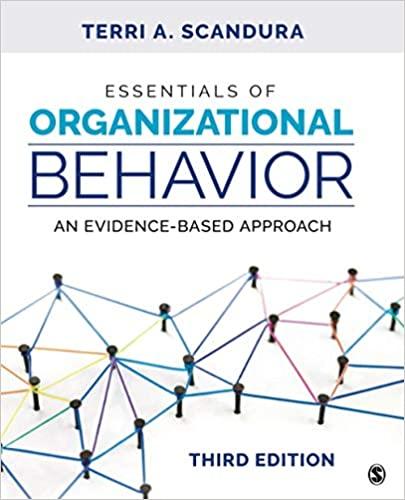Amazon has reinvented itself again and again and thrived on organizational change. Since the company went online
Question:
Amazon has reinvented itself again and again and thrived on organizational change. Since the company went online in 1995, the e-commerce giant has evolved under the leadership of one person—Jeff Bezos. When Amazon Web Services (AWS) started out, most investors didn’t take it seriously. However, 10 years later, it was the largest cloud retailer in the world. It now has more capacity than its nearest 14 competitors combined, but this shouldn’t come as a surprise. When the company first launched its website, all it sold was books. Amazon was viewed as being like eBay or Craigslist—a website you went to for a specific purpose. It wasn’t a daily habit like using Google or Instagram. Gradually, they expanded Amazon’s offerings to include CDs and DVDs. Kindle was one of Amazon’s biggest innovations. This revolutionized the book publishing industry and changed how books are read, sold, and distributed. Some estimates have placed Kindle e-book revenue at over half a billion dollars per year. But Amazon never really stopped changing. The products offered on the website expanded and new products emerged, and the company now sells over 200 million products to customers all over the world. Amazon has a market valuation of more than \($440\) billion. It has become the second-largest employer in the United States, with more than 750,000 full-time employees, mostly in its fulfillment centers and warehouses, up from less than 34,000 at the end of 2010. Amazon drastically changed product delivery and automation in their warehouses. For instance, customers with Amazon Prime memberships can enjoy free 2-day delivery. Changes continue as Amazon explores delivering packages by drones in 30 minutes or less. Amazon’s logistics and shipping operations have become almost impenetrable moats that few other companies will ever have the resources or ability to match, and the company said in April 2019 it was spending \($800\) million in a single quarter to offer free 1-day delivery for all Prime customers in the United States. Regarding hardware, Amazon learned from a failed phone launch (the Fire Phone) in 2014. They pivoted and released an entirely new gadget: the home assistant. Alexa was fully developed, turning Apple’s Siri into a legacy technology and leaving Google— the self-proclaimed artificial intelligence experts— playing catch-up. Amazon now produces its own video, television series, and films, winning three Academy Awards in 2017. After acquiring Whole Foods, Amazon began making changes to the grocery store chain, including price cuts, adding Amazon products, integrating Whole Foods and Amazon Prime, and restructuring. Other programs include food delivery from Whole Foods, rewards for customers using Amazon credit cards, and discounts for Prime members. They seek to further disrupt and dominate retail grocery stores with Amazon Go, which is a physical grocery store with no checkout lines, no hassles, and high convenience.....
Discussion Questions
1. Explain the impact of Jeff Bezos being the leader of Amazon since its beginning. How does this compare to organizations that change their CEOs during times of challenge?
2. Discuss the role of experimentation and learning from failure in Amazon’s approach to organizational change. Research and develop another example of where an organization has learned from failure and ultimately succeeded.
3. Discuss how the acquisition of Whole Foods helped Amazon executives learn how to disrupt the grocery industry. In your opinion, will they succeed in the retail grocery market? Why or why not? 4. In addition to an obsession with the customer, what are the other keys to Amazon’s success in implementing organizational change?
Step by Step Answer:

Essentials Of Organizational Behavior An Evidence-Based Approach
ISBN: 9781544396781
3rd Edition
Authors: Terri A. Scandura





